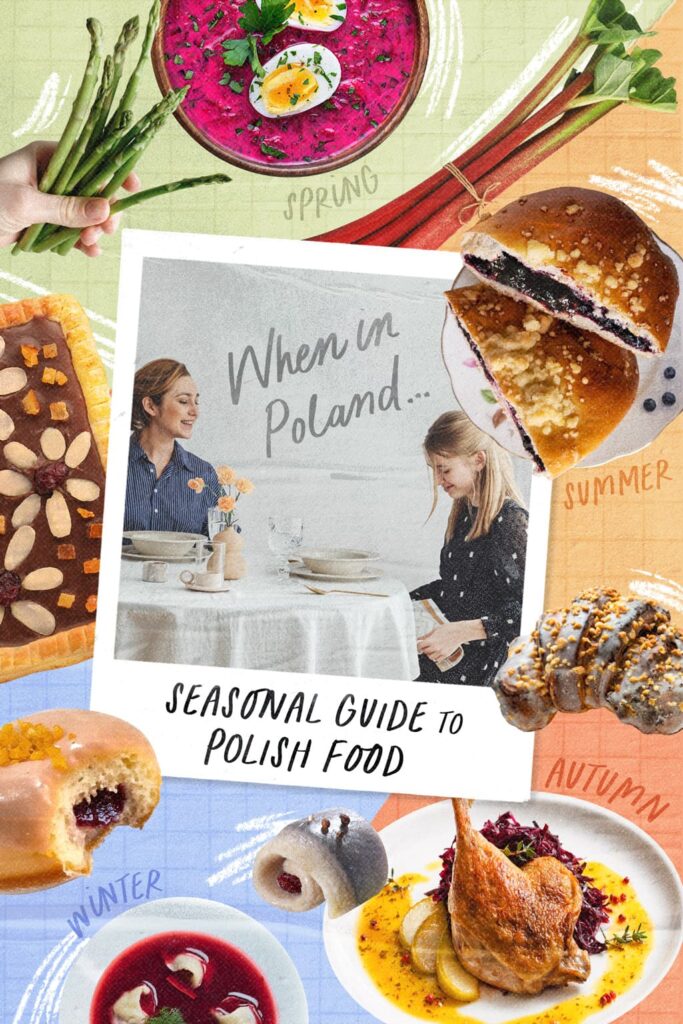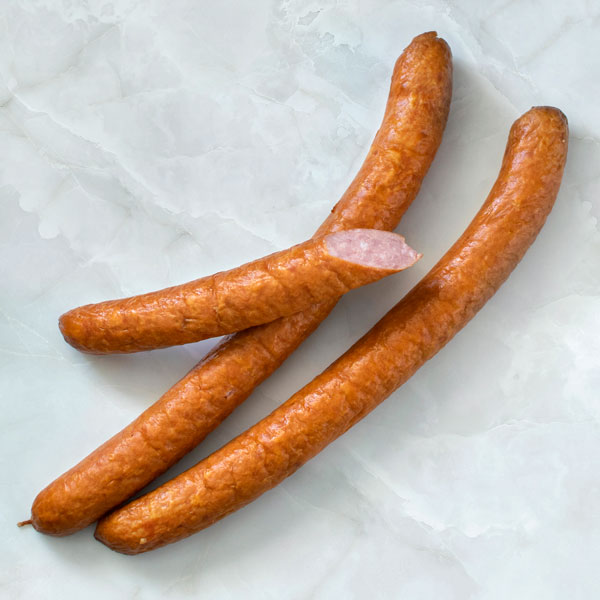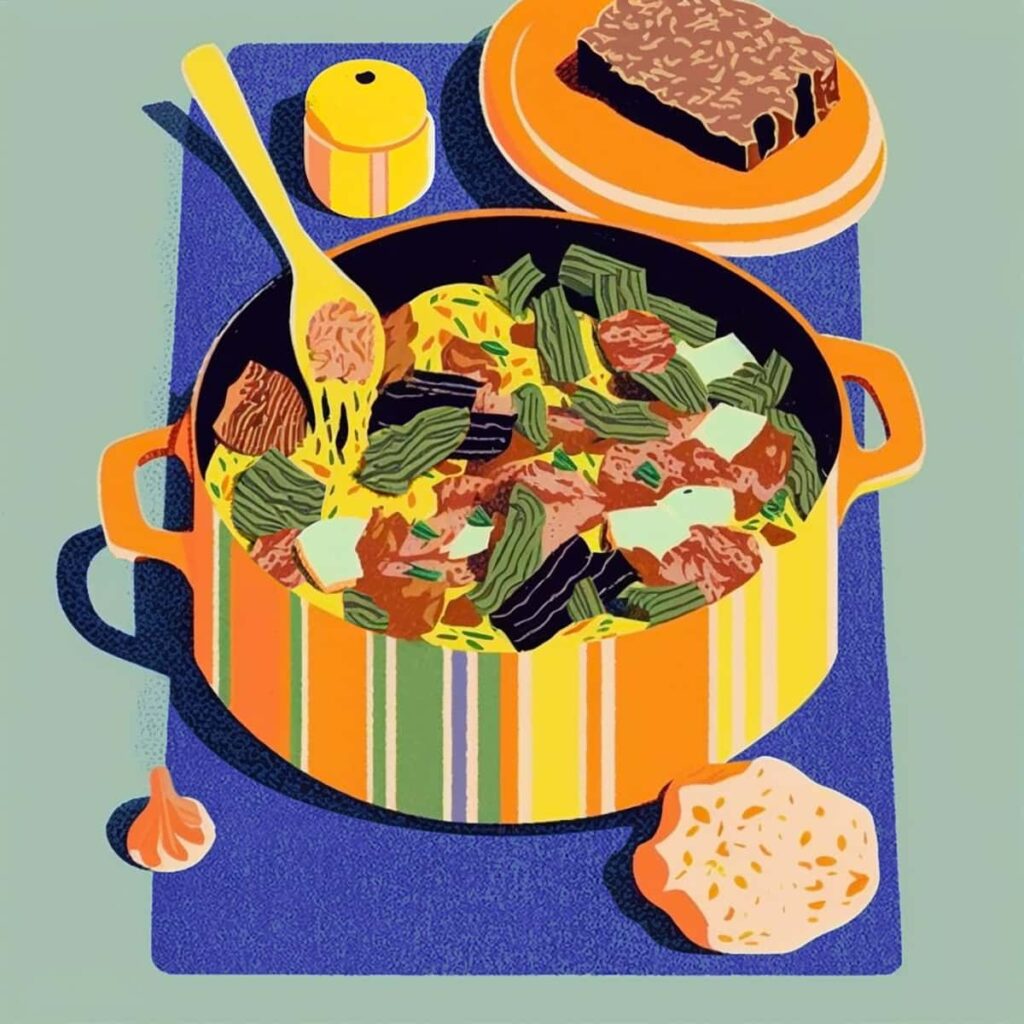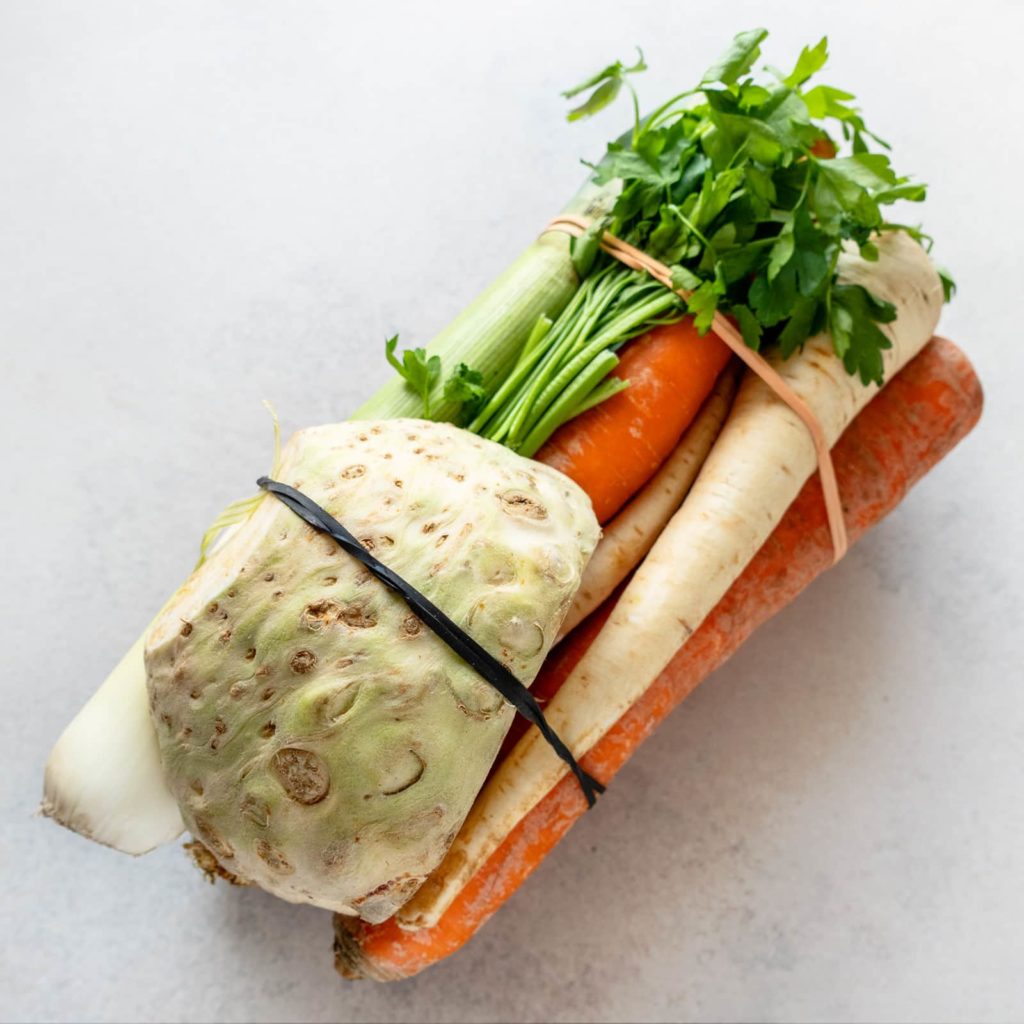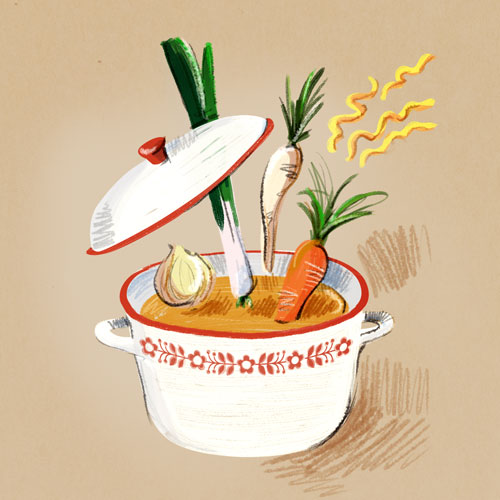The Definitive Guide to Seasonal Eating in Poland
Note: This article was originally published in late March 2023, and will be updated with photography as the year progresses. Watch this space :)
Polish cuisine is deeply rooted in the changing seasons and the many special occasions and celebrations that take place throughout the year. This is why you’ll find that many restaurants in Poland offer special seasonal menus in addition to their regular offerings.
In this definitive guide to seasonal eating in Poland, I’m going to take you on a culinary journey through the country’s vibrant and varied food scene, showcasing what’s in season and what you absolutely have to try during your visit.
Many of these foods and dishes are only available at specific times of the year. So, if you don’t want to miss the opportunity to taste them, this guide will provide you with insider knowledge on what to seek out on your next trip.
Early Spring
late February till mid-April
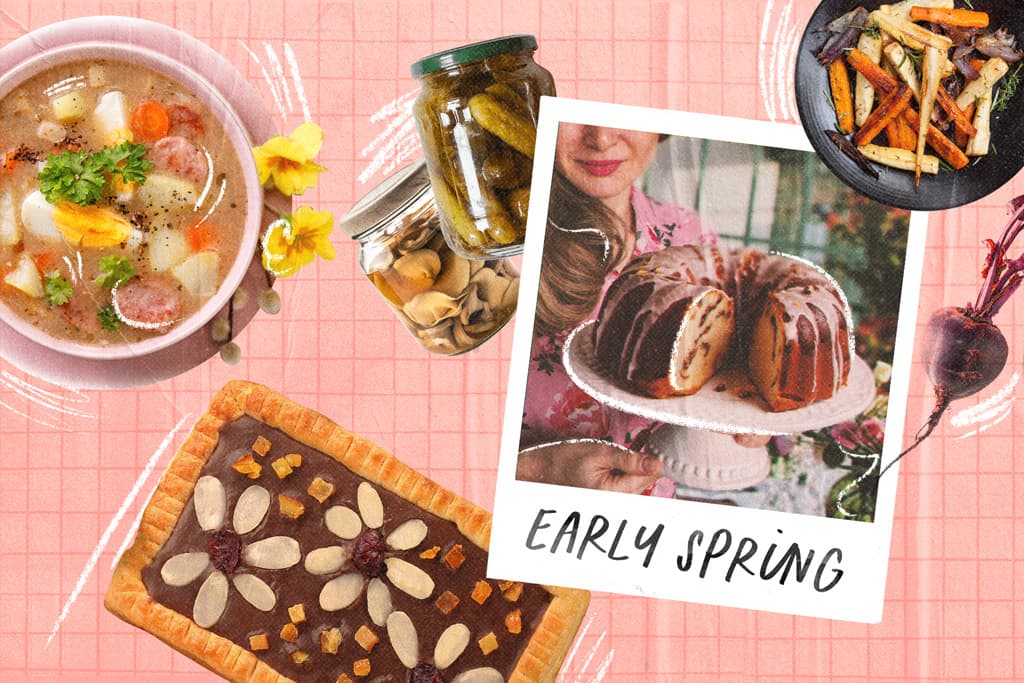
It’s always hard to predict exactly when the early spring will arrive. However, typically, it begins shortly after the carnival ends, anywhere between late February to mid-March.
Unfortunately, it’s not the easiest time of year for fresh produce. The locals eagerly anticipate the first ‘nowalijki,’ – the Polish name for early spring vegetables. In the meantime, we rely on imports or preserved foods, such as fermented or pickled veggies, fruits, and wild mushrooms. It’s the perfect time to indulge in hearty dishes based on sauerkraut, potatoes, and root vegetables (beets, parsley roots, Jerusalem artichokes, black salsifies, swedes/rutabagas)
With Easter on the horizon, expect to see holiday menus popping up all around. While the beloved Żurek soup is a year-round staple, soups like Chrzanowa (horseradish soup) rarely make an appearance outside of the Easter season.
Many restaurants offer traditional Easter dishes, but only as take-away pre-orders to be picked up just before the holiday and enjoyed at home with family.
Keep in mind that most restaurants are closed on Easter Sunday and Monday. So, it’s best to plan ahead and order a variety of delicious foods in advance. The selection includes baked pâtés, roasted ducks and geese, hams, gourmet kiełbasa & cold cuts, deviled eggs, pickled herring in various marinades, and more.
Bakeries, pastry shops, and cafeterias are also filled with a plethora of traditional Easter goodies. Among them, you’ll find Babka, a delightful yeast cake bursting with raisins. It’s most commonly baked in a tall, fluted bundt cake pan, resembling a grandmother’s skirt (hence the name). These days, there are various flavours of Babka cakes available, from zesty lemon to decadent chocolate.
Another Easter treat to keep an eye out for is Mazurek, a Polish Easter tart. Nowadays, it’s often made as a single-layer version with either short or half-short pastry covered in kajmak (caramel cream), marmalade, chocolate mousse, or other types of filling. The top is adorned with dried fruit and nuts arranged in Easter themes, making it a feast for both the eyes and taste buds.
Spring
mid-April till mid-June
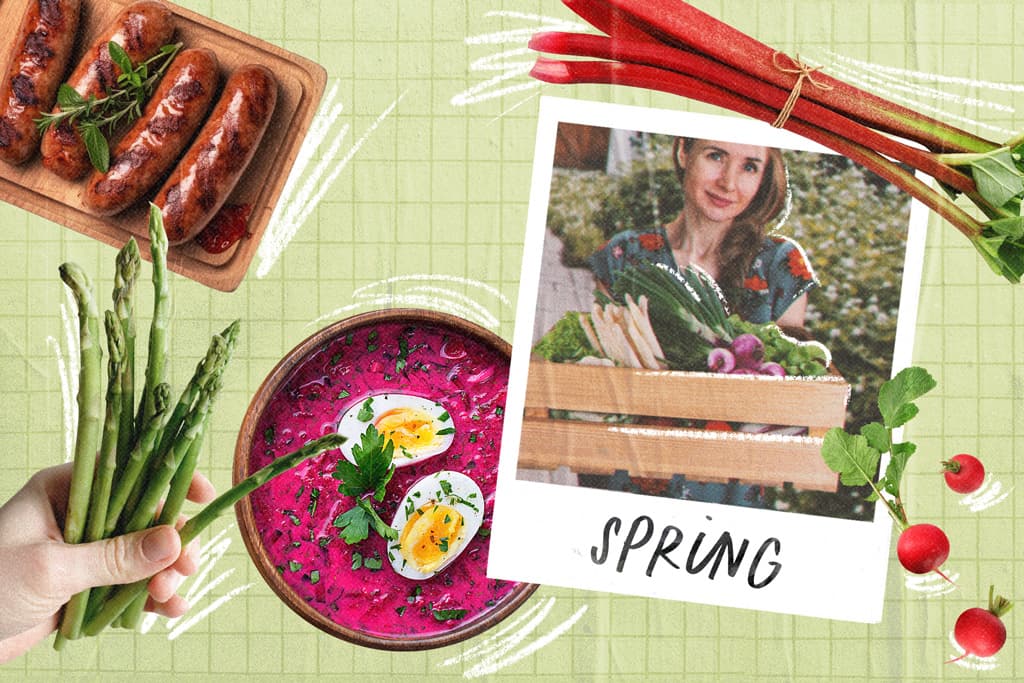
Finally, nature starts to wake up. After a long time without fresh produce, we devour the very first spring onions, radishes, cabbage, carrots and new potatoes.
On window seals, some home cooks plant sharp-tasting rzeżucha (garden cress) and various sprouts, which get added to salads. Meadow-foraged plants are making a comeback as well, it’s not unusual for seasoned foragers to pick up spring nettle leaves for soups or casseroles, or collect acacia flowers to be fried in sweet batter.
Restaurants take advantage of the season by launching special asparagus-themed menus featuring green and white asparagus in various configurations. Asparagus can be found in soups, salads, as sides, or paired with eggs.
Young beets with greens are transformed into popular soups like Chłodnik litewski and Botwinka, while sorrel leaves are used to make sauces and Szczawiowa soup.
‘Majówka’, the long weekend starting on May 1st, marks the inauguration of the Polish grilling season. Poles dust off their grilling equipment, stock up on beers and grill kiełbasa, marinated karkówka (pork neck/shoulder/also known as ‘pork butt’) and a variety of other meats & fish. Vegetarians opt for cheeses, courgettes and other veggies.
May is an excellent time to sample a variety of fish, including Karaś (crucian carp), Lin (tench), Miętus (burbot), Okoń (common perch), and Szczupak (northern pike).
Rhubarb is another springtime favourite, found in braised or caramelised dishes, kompot drinks and desserts. Bakeries and pastry shops sell Drożdżówka z rabarbarem, a delightfully soft yeast bun topped with rhubarb and crumble.
Finally, springtime marks the start of the season for Oscypek cheese, made from sheep’s milk. Shepherds take their flocks to the mountains at the end of April, and fresh Oscypek cheese can be purchased throughout the season until the end of September.
Summer
mid-June till mid-September

Summer in Poland is a food lover’s dream. As the weather warms up, the Polish food scene really starts to buzz. Outdoor restaurant gardens and street food markets become the go-to spots.
At markets, you’ll find a bounty of fruit – with gooseberries, sweet cherries, and strawberries to begin with. Later in the season, raspberries, currants (white, red, and black), peaches, apricots, sour cherries and wild strawberries make their appearance. They’re enjoyed fresh, in desserts, or transformed into refreshing lemonades and kompot drinks. In restaurants, you may even come across fruit-based soups (sic!) and fruit-filled Knedle (type of round dumplings).
Here’s a list of some of the farmers’ markets for you to visit:
- Gdańsk: Hala Targowa Kupcy Dominikańscy
- Poznań: Rynek Jeżycki, Rynek Łazarski, Rynek Wildecki
- Warsaw: Hala Mirowska, Forteca Kręgliccy (Wednesdays 8AM-2PM), Hala Banacha, BioBazar Fabryka Norblina
- Kraków: Stary Kleparz, Plac Imbramowski, Targ Pietruszkowy, Plac na Stawach, Hala Targowa
- Katowice: Zielony Bazar (Kolońska 1), BioBazar Huta Baildon
- Wrocław: Hala Targowa (Piaskowa 17)
If you’re looking for a special culinary experience, check out the seasonal menus, featuring fresh bób (fava beans), fasolka szparagowa (green beans), and kurki (chanterelles) – the true gold of the forest. Talented chefs transform these seasonal ingredients into culinary poetry.
Sharing plates are a popular choice for dining out with friends. Seek out ‘zakąski’ (small plates) as well as ‘deski’ (sharing boards) with Polish artisanal cheeses and charcuterie. If you’re visiting Mazury, or dining where fish is served, be sure to try Sandacz (zander), Leszcz (bream), Sum (catfish), or Węgorz (eel).
Grilling continues throughout the summer months, and you shouldn’t leave without sampling some of the fine Polish beers in bars and multitaps. And of course, don’t forget to stop by a local ‘lodziarnia’ for some ice cream.
In the summer, Polish forests come alive with jagody (bilberries/European blueberries). These delicate fruits must be hand-collected and aren’t farmed, making them all the more precious. Bakeries and pastry shops compete to create the best Jagodzianka, a sweet yeast roll packed with bilberries, topped with crumble, and drizzled with icing. But hurry, the season ends in mid-to-late August
It’s also a time for popular food festivals, featuring regional and artisanal products from across the country, live cooking sessions, and even concerts. Here are a few for you to check out:
- Jastrzębie-Zdrój: Festiwal Śląskie Smaki (The Silesian Flavours Festival), June
- Poznań: Ogólnopolski Festiwal Dobrego Smaku (Poland’s Good Taste Festival), mid-August
- Gruczno: Festiwal Smaku (The Flavour Festival), late August
- Lublin: Europejski Festiwal Smaku (The European Festival of Taste), early September
As the summer draws to a close, the beekeeper’s harvest festival Miodobranie marks the end of the honey season.
The most famous ‘Miodobranie’ festival takes place in the Kurpie region of Myszyniec, but it’s worth checking if there is a festival in the area you’re visiting as well.
The celebration offers a range of attractions, including tastings of locally produced honey, educational shows, live cooking demonstrations, as well as traditional folk music performances.
Autumn
mid-September till mid-to-late November
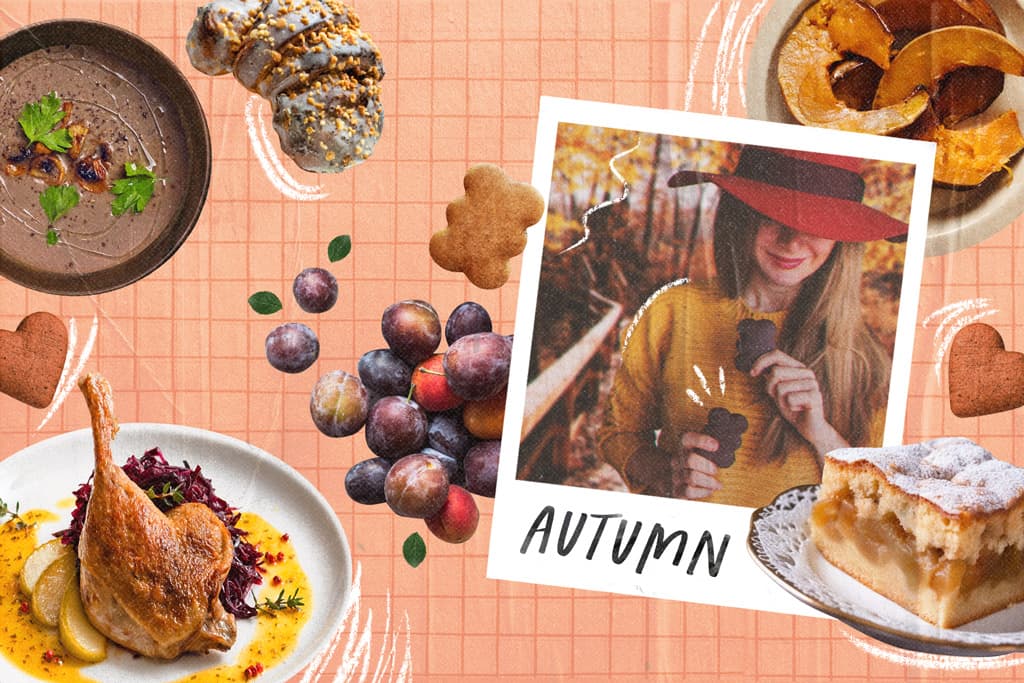
Autumn is a wonderful time for a Polish culinary adventure. From sweet treats to hearty game meats, there’s something for everyone to enjoy.
One of the most unique, off-the-beaten-track experiences is a visit to a historical cemetery to appreciate its artistic, architectural, historical, and scenic heritage.
On November 1st and 2nd, Poles visit cemeteries to honour the memory of their loved ones. During this time, street vendors sell regional treats just in front of the entry gates that are unique to this special time of year.
In Warsaw, seek out Pańska skórka, a chewy pastel-coloured candy that’s a favourite among generations of Varsovians. In Kraków, sample the honey-scented Miodek turecki candies with their irregular shapes and crumbly texture. In the Lublin region, you can find crumbly stick candies called Szczypki that come in a rainbow of colours. And in the Poznań area, don’t miss out on the Rury, shortbread cookies made with honey and shaped like roof tiles.
Speaking of Poznań, that’s where the famous Rogal świętomarciński (St. Martin’s croissant) originates from. It is a rich and delicious pastry, filled with white poppy seeds, nuts and raisins. Although it was originally made to celebrate St. Martin’s Day on November 11th, it’s now available throughout November across the country.
It’s worth pointing out that St. Martin’s croissants are a regional product with a protected designation of origin in the European Union. This means that they can only be produced under this name in the Wielkopolska (Greater Poland) region, according to a strictly defined recipe.
Autumn is also the best time to try goose and duck dishes that Poland is renowned for. Many restaurants offer special seasonal menus, and some even take part in a competition called ‘Gęsina na św. Marcina‘ (“goose meat for St. Martin’s Day”) to see which chef can create the best dish.
On November 3rd, Hubertus (also known as St. Hubert’s Day) marks the opening of the season for wild game meats. From wild boar and deer to hare and pheasant, the selection is vast and not to be missed. Just be sure to check with restaurants beforehand as not all will have these delicacies on their menus.
Autumn is also prime time for mushroom foraging, a beloved ‘national sport’ in Poland. Wild mushrooms are turned into appetizers, and soups, added to stews, and even pickled or fermented. When dining out, look out for Grzybowa soup made of borowiki (penny buns/porcini), and Smażone rydze z patelni (saffron milk caps sautéed in butter).
Fish lovers will also find plenty to enjoy with dishes featuring Sandacz (zander) and Szczupak (northern pike) popping on the menus.
Pumpkins may not be closely associated with Polish cuisine so far, but we’ve become a pumpkin-growing superpower in recent years – and now they’re on menus everywhere.
Autumn and winter are the best seasons to try Polish gingerbread cookies, with offerings ranging from affordable treats from Toruń’s Kopernik factory to artisanal varieties made with real Polish honey.
November 25th mark St. Catherine’s Day, known in Poland as ‘Katarzynki‘. The Museum of Toruń Gingerbread organises its festival during this time. It’s definitely worth attending if you’re in the vicinity.
Finally, if you’re still craving something sweet, bakeries, pastry shops, and cafeterias offer wonderful cakes and yeast buns featuring the stars of the season: plums, pears, and apples. Don’t leave Poland without trying Szarlotka, the classic Polish-style apple pie.
Winter
late November till mid-February

As winter settles in, we turn to hearty dishes made from supplies saved from earlier seasons. Root vegetables and potatoes find their way into soups and stews, providing warmth and comfort during the cold season.
If you come across Christmas party (“śledzik”) menus, I recommend trying dishes featuring herring in various forms, such as tartare, salad, or in various marinades. Herring is a rare delicacy in many places around the world (including the US), so seize the opportunity while you’re here.
Leading up to Christmas, many restaurants offer celebratory menus that can be pre-ordered and picked up right before the festivities begin.
Keep an eye out for Barszcz z uszkami, a vegetable consommé soured with fermented red beet starter and served with small dumplings filled with wild mushrooms (and sometimes sauerkraut as well). If you’re a fish enthusiast, it’s the best time to sample dishes featuring Karp (carp), Pstrąg (trout) and Łosoś (salmon).
During the Christmas holidays, most shops and food establishments close for the evening of Dec 24th (Wigilia), the whole of 25th, and sometimes also the 26th. Plan ahead and stock up, or enquire at restaurants and hotels about food options.
The winter season is an excellent time to sample classic Polish desserts that aren’t as commonly available throughout the year.
Treat yourself to a slice of Makowiec, a yeast roll packed with poppy seeds, raisins, and nuts, drizzled with icing and topped with candied orange peel. If you enjoy it, you can order the whole roll to take with you.
Another Christmas delicacy is spicy Piernik cake made from honey-enriched dough that has been matured for several weeks before being baked and layered with prune butter and glazed with chocolate ganache. Don’t be afraid to try different versions of these classic desserts at different bakeries – many of them offer their unique spin on the classics.
For a festive pick-me-up, try a cup of warming brew – Grzane wino (mulled wine) or Grzane piwo (mulled beer). The aroma of citrus fruit and festive spices will warm you up and put you in a merry mood.
For New Year’s Eve, most restaurants offer special celebratory set menus. Book in advance to avoid disappointment. When selecting a drink, I recommend sampling our wonderful Polish wines and craft spirits (vodkas, gins, meads, nalewka… there’s a lot to choose from).
While Valentine’s Day isn’t widely celebrated in Poland, many venues offer love-themed dinners for the occasion. But don’t expect to find any ‘Polish classics’ on the menu.
As we wrap up carnival season, let me mention Tłusty czwartek (Fat Thursday), which falls on the last Thursday before Lent. It’s the day when millions of Poles line up outside the best pastry shops to buy Pączki – rich yeast doughnuts filled with various jams and creams.
Even though Pączki are available all year round, February is the best time to try them out, as the variety is the greatest during this season.
Another popular ‘Tłusty czwartek’ treats are Chruściki (also known as Faworki) – sweet crisp pastries made out of dough that has been shaped into thin twisted ribbons. In Poland, they aren’t as widely available outside of this season, but surprisingly, Polish delis abroad carry them for Christmas and Easter as well.
In the past, it was customary for Poles to avoid consuming animal products during Lent. However, this practice is now uncommon, and you can enjoy meat-based dishes any time of the year.
That said, Poland’s vegan and vegetarian restaurant scene has been booming in recent years. You’ll be amazed by the wide range of delicious and innovative plant-based dishes that are available.
When are you coming over?
Whether you’re visiting in the depths of winter or the height of summer, there are always exciting seasonal foods to discover.
By embracing the spirit of adventure and venturing beyond the familiar, you can unlock a world of flavours and experiences that only the locals know and enjoy.
Why settle for everyday pierogi*, widely available all year round, when you can taste the very best of Polish seasonal cuisine? Stay curious, and enjoy your trip.
I hope you’ll have a wonderful time here.
*Don’t get me wrong, pierogi are great too. :) But how about trying them with a seasonal filling?
